A Comprehensive Guide to Aluminum CNC Machining
Aluminum is one of the most popular material choices for CNC machining projects because of its desirable physical properties. CNC machining shops near me will choose aluminum as their material of choice because it is not only strong and durable, making it ideal for making machine parts, but its oxidized outer layer resists corrosion from the elements.
These benefits make aluminum parts common in all industries, even in the automotive, aerospace, healthcare, and consumer electronics sectors.
Aluminum also has some special advantages that can simplify and improve the CNC machining process. Unlike many other metals with similar material properties, aluminum has excellent machinability, and many grades of aluminum can be effectively penetrated by cutting tools, easily chipped, and relatively easy to form. Because of this, aluminum can be machined more than three times faster than iron or steel.
This article describes some of the main benefits of aluminum CNC machining and why it is one of our most widely requested prototyping and production processes. It also proposes alternatives to aluminum machining, as other metals and plastics offer similar benefits to aluminum in addition to their own unique advantages.
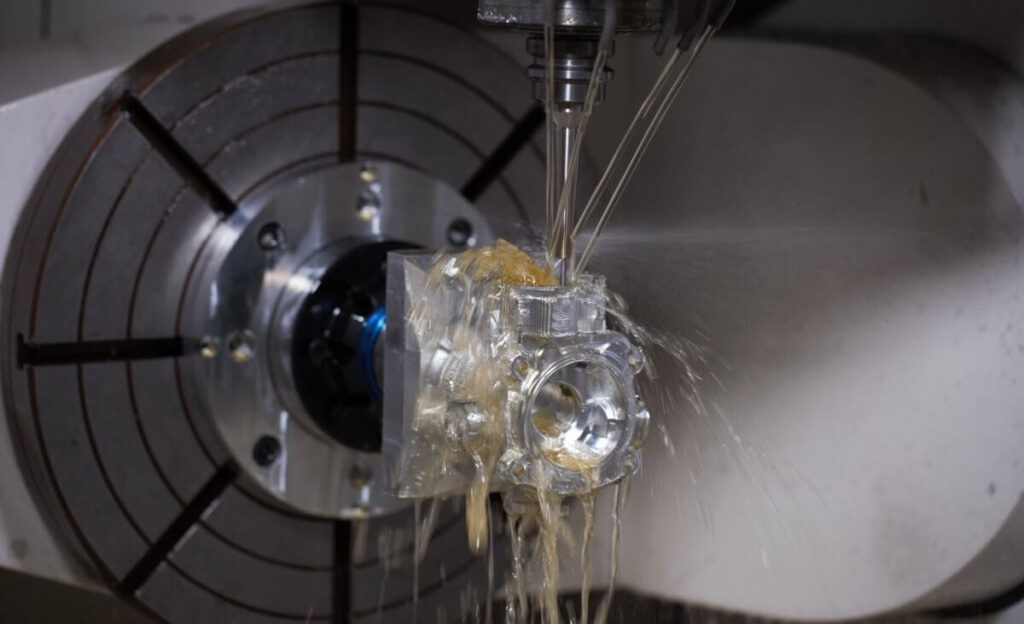
1.Benefits of Aluminum CNC Machining
1) Machinability
One of the main reasons engineers choose aluminum for machining parts is that the material is easy to machine. While this may seem more beneficial to the machinist who makes the part, it also has significant benefits for the business that orders the part and the end user who ultimately uses it.
Because aluminum breaks easily and is easy to shape. It can be cut quickly and accurately using CNC machines. This has some important consequences:
- The short time of the machining operation makes the machining process cheaper because the machinist requires less labor and the machine itself requires less operating time;
- Secondly, good machinability means less deformation of the part as the cutting tool passes through the workpiece. This allows the machine to meet tighter tolerances as low as ±0.025 mm, achieving higher accuracy and repeatability.
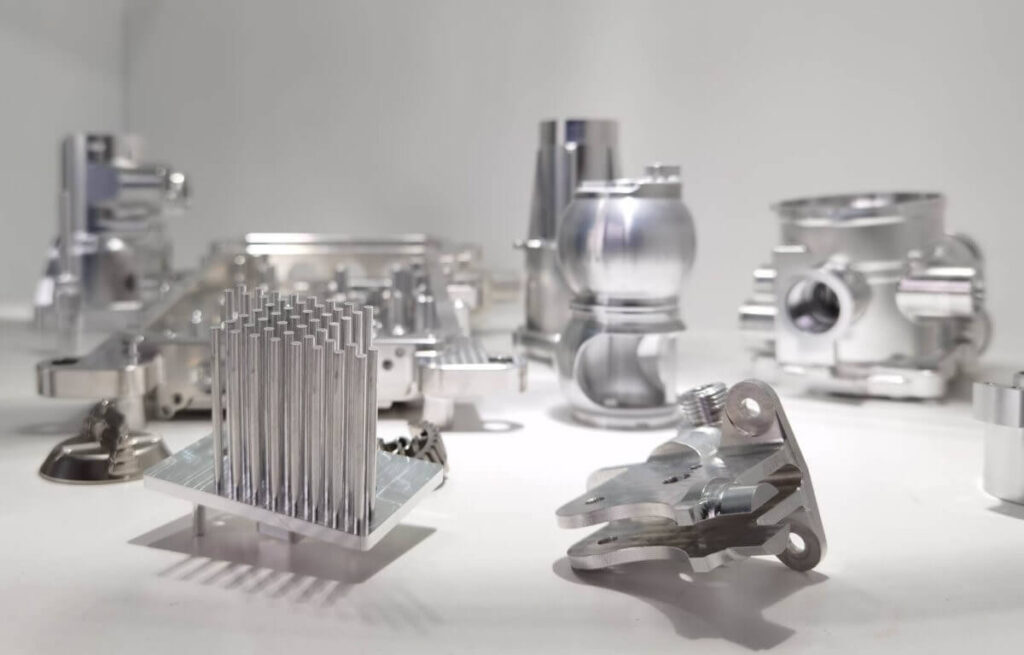
2) Corrosion resistance
Different grades of aluminum vary greatly in their corrosion resistance, that is, how well they can resist oxidation and chemical damage. Fortunately, some of the most popular CNC machining grades of aluminum have the strongest corrosion resistance. For example, 6061 has excellent corrosion resistance, as do other alloys lower in the strength range. Strong aluminum alloys may have poor corrosion resistance due to the presence of alloying copper.
3) Strength-to-weight ratio
Aluminum has desirable physical properties that make it ideal for machinery and parts. Two of the most important of these properties are high strength and light weight, both of which make the material ideal for critical components required by the aerospace and automotive industries. Aircraft fittings and automotive axles are two examples of materials that can be successfully machined with aluminum.
However, different grades of aluminum have different uses. General-purpose grades such as 6061 are used in a variety of parts due to their good strength-to-weight ratio, while high-strength grades such as 7075 may be more suitable for aerospace and marine applications.
4) Electrical conductivity
CNC machined aluminum parts are used in electrical components due to their electrical conductivity. While pure aluminum is not as conductive as copper, it has a conductivity of about 37.7 million Siemens/meter at room temperature. Alloys may have lower conductivity, but aluminum materials are significantly more conductive than materials such as stainless steel.
5) Anodizing potential
Machinery aluminum parts are particularly popular in the consumer electronics industry, not only for their strength and weight requirements, but also for their aesthetics. In addition to being easily painted and dyed, aluminum can also be anodized, a surface treatment process that thickens the protective oxide outer layer of a part.
The anodizing process is usually performed after machining is completed and involves passing an electric current through the part in an electrolytic acid tank, resulting in an aluminum piece that is more resistant to physical impact and corrosion. Importantly, anodizing makes it easier to add color to machined aluminum parts because the anodized outer layer is highly porous. The dye can pass through the porous parts of the outer layer, and because the dye is embedded in the hard exterior of the metal part, it is less likely to chip or flake off.
6) Recyclability
High recyclability makes aluminum a top choice for businesses that want to minimize their environmental impact or those that simply want to reduce material waste and recoup some of their expenses. Recyclable materials are particularly important in CNC machining, where cutting tools generate relatively high amounts of waste.
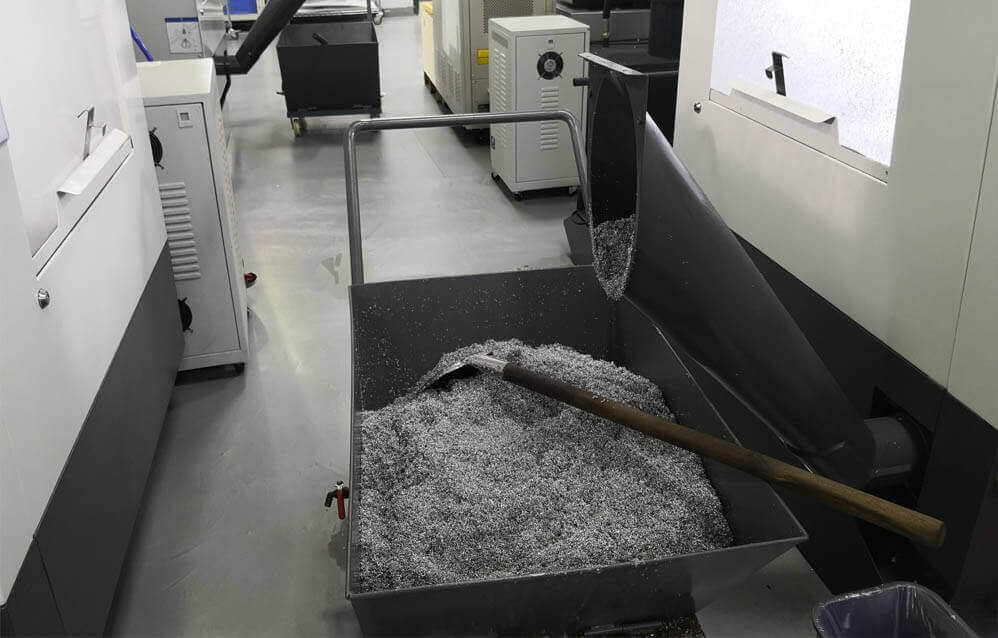
2.Alternatives to aluminum in CNC machining
Businesses may seek alternatives to aluminum for CNC machining for a variety of reasons. After all, aluminum has some drawbacks: its oxide coating can damage tools, and it’s generally more expensive than alternatives like steel, in part because of the high energy costs of aluminum production. Here are some potential machining alternatives to aluminum, highlighting their differences and similarities to the popular silver-gray metal.
1) Metals
①Steel and stainless steel
Better than aluminum:
- Strength
- Temperature resistance
Worse than aluminum:
- Machinability
- Weight
Steel and stainless steel are widely used materials in CNC machining. Due to its high strength, steel tends to be better suited for high-stress applications and those that require strong welds. Steel can withstand extremely high temperatures, and stainless steel can be heat treated to enhance its corrosion resistance.
However, despite the careful engineering of machining steel to improve machinability, aluminum remains the more machinable of the two materials. Steel is also heavier and harder than aluminum, which may or may not be ideal depending on the application. If high-temperature resistance is the main consideration and weight is not, then steel may be a good alternative to aluminum.
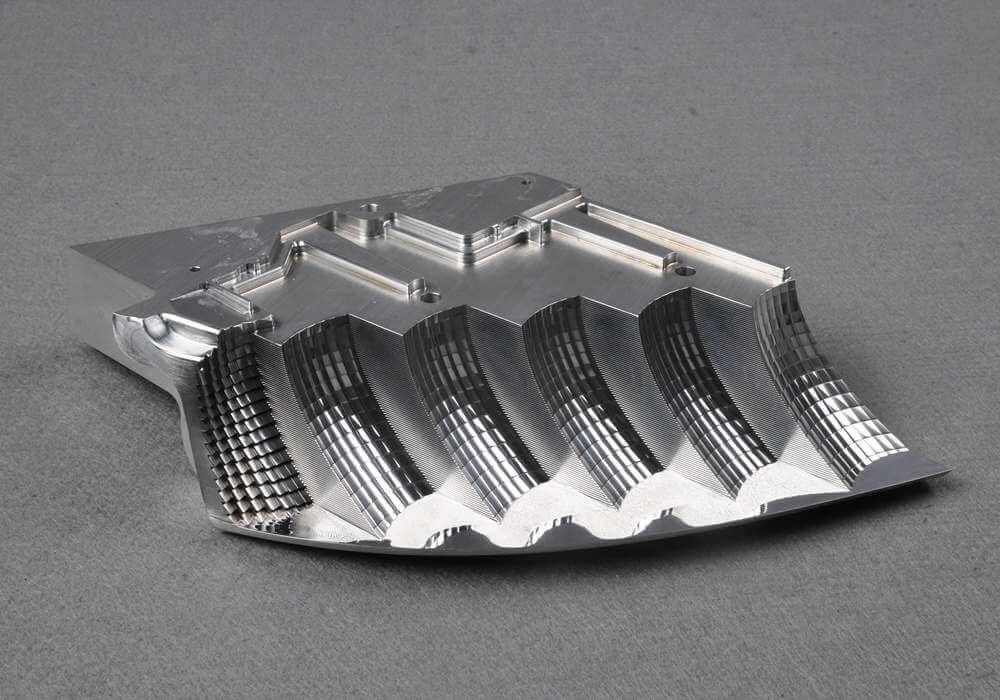
②Titanium
Better than aluminum: Strength-to-weight ratio
Worse than aluminum: Cost
Titanium can be used as a like-for-like substitute for aluminum because its main advantage is its excellent strength-to-weight ratio—one of aluminum’s main advantages. Titanium weighs similarly to aluminum but is nearly twice as strong. Like aluminum, titanium also has strong corrosion resistance.
These advantages are reflected in the higher price of titanium alloys. While titanium alloys are an excellent choice for manufacturing parts such as aircraft components and medical devices, their cost can be too high. When lightweighting is the main consideration and there is some flexibility in the manufacturing budget, machining titanium is a suitable substitute for aluminum.
③Magnesium
Better than aluminum:
- Machinability
- Weight
Worse than aluminum:
- Machinability
- Corrosion resistance
Although not the most commonly machined material, the lightweight metal magnesium has many of the advantages of ordinary aluminum alloys. In fact, magnesium is one of the easiest metals to machine today, making the machining process fast and efficient.
What is a potential disadvantage for machine shops? Magnesium chips are highly flammable, and water further exacerbates their hazards, which means that machinists must be careful when removing debris.
④ Brass
Better than aluminum: Some aesthetic applications
Worse than aluminum: Cost
Brass is a golden-looking metal that is highly machinable and slightly more expensive than aluminum. Brass is often used to make components such as valves and nozzles, as well as structural components, and is highly machinable and suitable for large-volume orders.
⑤ Copper
Better than aluminum: Electrical conductivity
Worse than aluminum: Machinability
Copper shares a variety of material properties with aluminum. However, copper’s excellent electrical conductivity makes it an ideal material for a variety of electrical applications. While pure copper is difficult to machine, many copper alloys have machinability similar to commonly used aluminum grades.
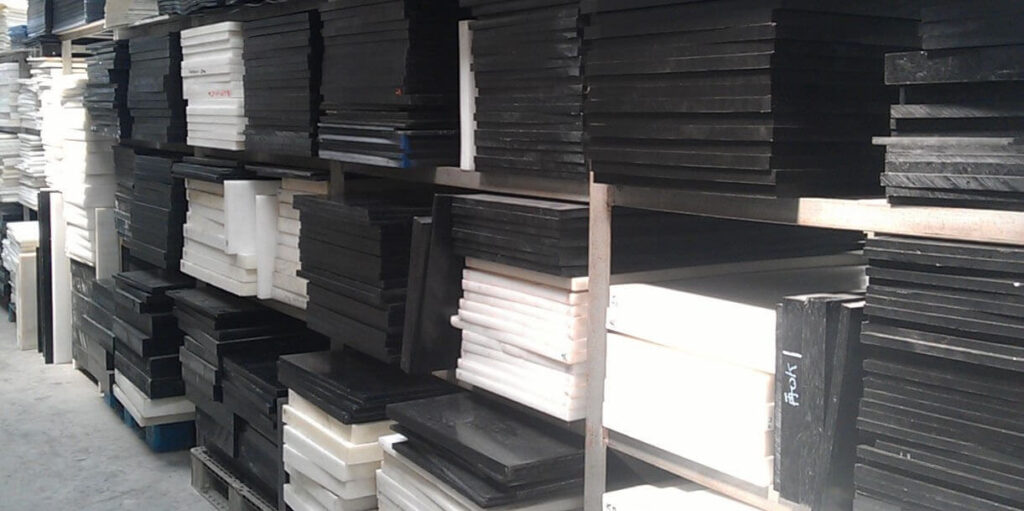
2) Engineering Thermoplastics
① POM (Polyoxymethylene)
Better than aluminum:
- Electrical insulation
- Low friction
Worse than aluminum:
- Strength
- Heat resistance
CNC machining projects don’t have to be limited to metals. In fact, depending on the application, a variety of engineering thermoplastics can match or even surpass some of the advantages of aluminum. Since aluminum is favored for its excellent machinability, a viable plastic alternative is POM (Delrin), which, like aluminum, is very suitable for processing.
POM has a low melting point, but as a plastic, its strength is very high. At the same time, as an electrical insulator, POM is very suitable for manufacturing parts such as electronic housings, and is also suitable for manufacturing mechanical parts. However, given that its insulating properties are very different from aluminum, it should only be used as a like-for-like substitute in situations where thermal and electrical conductivity are not important.
②PTFE (Teflon)
Better than aluminum:
- Electrical insulation
- Very low friction
Worse than aluminum: Strength
Like POM, PTFE (Teflon) is a highly machinable thermoplastic and an excellent electrical insulator. However, unlike POM, PTFE is also resistant to high temperatures (up to 260°C), making it a viable aluminum substitute in high-temperature applications. In addition, its high chemical resistance makes PTFE (Teflon) a popular processing material for food industry parts.
③ Peep
Better than aluminum: Medical uses
Worse than aluminum:
- Processability
- Cost
Although PEEK is more difficult to process than the first two thermoplastics, its high strength and thermal stability up to 260°C make it a real alternative to aluminum. Therefore, PEEK is popular for processing parts such as valves, bearings, pumps and nozzles, proving its metal-like performance.
But the main problem is the price. As a high-performance polymer, PEEK is one of the more expensive processable thermoplastics, so it is only suitable for processing projects where common materials such as aluminum cannot be used.
④ Anti-lock brake system
Better than aluminum: Thermal shock resistance
Worse than aluminum: Strength
ABS is commonly used as an injection molding material and has also been used as 3D printing filament in recent years. Although ABS has little in common with aluminum, it is still a versatile and lightweight CNC processing material with above-average impact strength.
⑤More
Most of the other machinable plastics are very different from aluminum, including PC, ABS+PC, PP, PS, PMMA (acrylic), PAGF30, PCGF30, DHPE, HDPE, and PPS.
3.Combining CNC machining with other processes
If aluminum remains the material of choice for a project, CNC machining can be combined with other manufacturing processes to create more complex, higher-performance aluminum parts. Doing so maximizes the functionality of aluminum while gaining the benefits of multiple production processes. In addition to being an integrated manufacturing process, CNC machining can also be used to improve or modify parts made using other machinery. Extrusion, casting, and forging processes can all be complemented with machining processes to create better aluminum parts.
1) Aluminum Extrusion + CNC Machining
Extrusion is the process of forcing molten material through holes in a die to produce elongated parts with continuous contours. While aluminum extrusion is an effective way to produce functional parts with high-quality surface finishes and complex cross-sections, it is limited in scope because these cross-sections must remain consistent throughout the part.
Unless, of course, the part is modified after extrusion. Since aluminum extrusions tend to involve forgeable, ductile, and machinable aluminum grades such as 6061 and 6063, the extruded parts can then be post-processed—cut in a variety of ways using a CNC machining center. Combining aluminum extrusion and CNC machining is an excellent way to produce resilient parts with complex cross-sections and irregular geometries.
2) Die Casting + CNC Machining
Die casting is a manufacturing process in which molten metal is forced into a die cavity at high pressure. Since the required tool steel molds are expensive to manufacture, it is often used to produce parts in large quantities. Along with steel, magnesium, and zinc, aluminum is one of the most popular metals for pressure die casting, and die-cast aluminum parts often have excellent surface finish and dimensional consistency.
These advantages can be combined with those of CNC machining. By die casting aluminum parts and then using a machining center for further cutting, parts with smooth surfaces and more complex geometries can be produced that would not be possible using either process alone. If reducing costs is more important than ensuring high precision or creating thin walls, gravity die casting can be used instead of pressure die casting.
3) Investment Casting + CNC Machining
Investment casting is a metal casting process that uses wax patterns to make metal parts. Like other casting processes, the process produces parts with excellent surface finish and high dimensional accuracy. The process also has unique advantages: it can be used to make more complex parts than die casting, and the parts have no parting lines. Aluminum alloys are common materials for investment casting, and cast aluminum parts can be post-processed for refinement.
4) Forging + CNC Machining
Many machinable aluminum alloys are also suitable for the ancient forging process, which involves shaping the metal through compressive forces. (This usually requires hitting the metal with a hammer.) For example, 6061 aluminum is suitable for hot forging with closed dies – a common process for producing automotive and industrial parts.
Forged aluminum parts can be post-processed with CNC machining centers. This is advantageous compared to pure machining, because forged parts are generally stronger than fully cast or fully machined parts. However, post-machining allows more complex geometries to be created without completely compromising the integrity of the part.
To learn more about our aluminum CNC machining services and custom parts, contact Xavier,
Our experience in CNC machining and fine detailing means we have the capability to produce a wide range of aluminum machined parts, from small and simple to large and complex.
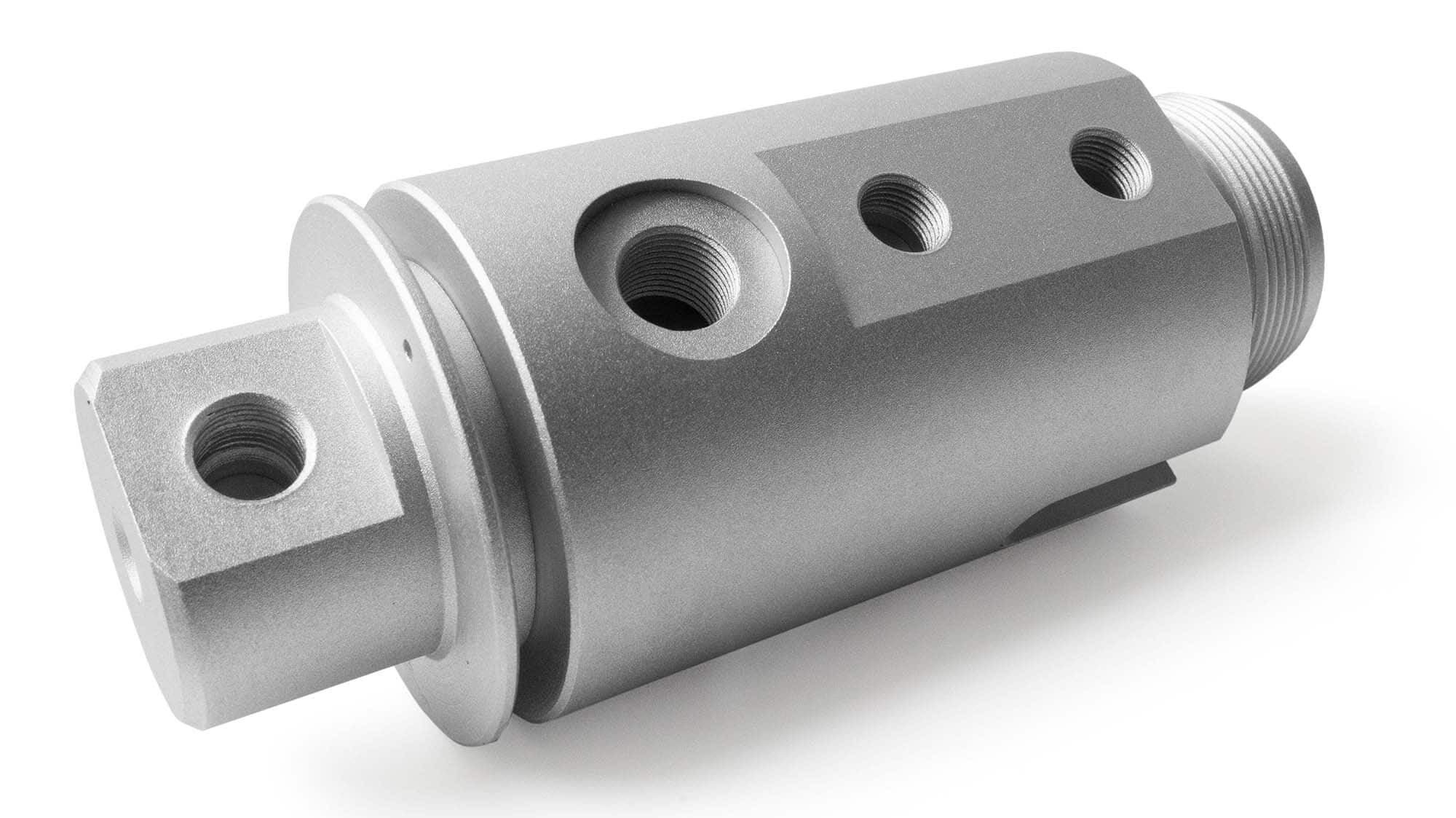
2 Comments
I too think therefore, perfectly indited post! .
It is in reality a nice and useful piece of info. I’m glad that you just shared this helpful information with us. Please stay us up to date like this. Thank you for sharing.